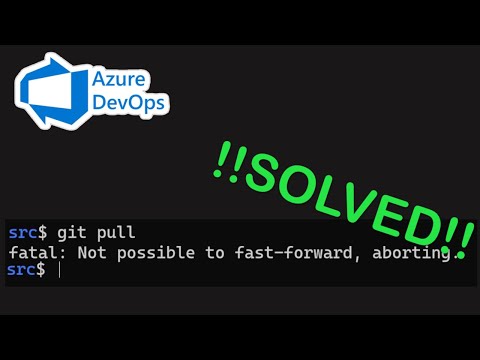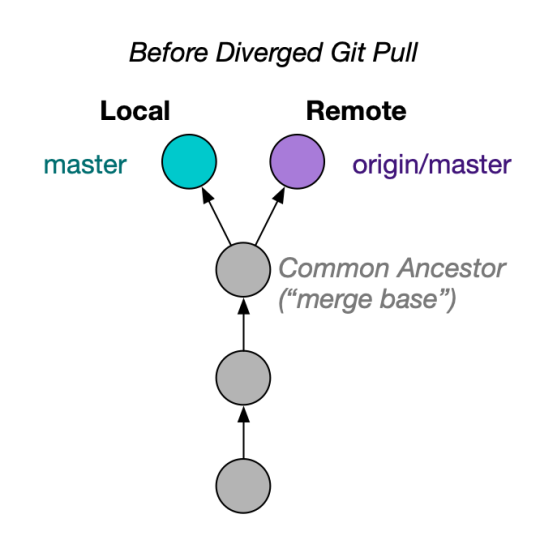Fatal Not Possible To Fast-Forward Aborting
Introduction
Abortion is a highly debated and often controversial topic across the globe. The decision to terminate a pregnancy is deeply personal and can be influenced by various factors including personal beliefs, cultural norms, and legal restrictions. This article aims to provide a comprehensive overview of the ethical, legal, emotional, and physical aspects of abortion. It will also explore the options and support available to women considering abortion, the religious perspectives surrounding the issue, the impact on society, and the importance of comprehensive sex education and access to contraception.
1. The Ethical Debate on Aborting a Pregnancy
The ethical debate surrounding abortion primarily revolves around the question of when personhood begins. Pro-choice advocates argue that a woman has the right to make decisions about her own body and that personhood begins at birth or at a later stage of fetal development. On the other hand, pro-life supporters believe that life begins at conception and that the fetus has the same right to life as any other human being. This conflicting viewpoint often leads to heated discussions and legal battles.
2. The Legal Status of Abortion in Different Countries
Abortion laws vary widely around the world, ranging from countries where abortion is completely illegal to those where it is fully legalized and accessible. Some countries have restrictive laws that only allow abortion under certain circumstances, such as if the mother’s life is at risk or in cases of rape or fetal abnormalities. In contrast, other countries maintain a more liberal stance, allowing for abortion on demand. The legal status of abortion has a significant impact on women’s access to safe healthcare services and their ability to exercise their reproductive rights.
3. The Emotional and Psychological Effects of Abortion
The decision to have an abortion can have profound emotional and psychological effects on women. Some women may experience feelings of guilt, sadness, or regret, while others may feel relief or a sense of empowerment. It is important to recognize that individual experiences can vary greatly, and support systems should be in place to provide counseling and emotional assistance to those who may need it.
4. The Physical Risks and Complications of Abortion
Like any medical procedure, abortion carries certain risks. The most common physical risks associated with abortion include infection, bleeding, and damage to the cervix or uterus. However, these complications are relatively rare, especially when the procedure is performed by trained healthcare professionals in a safe and regulated environment. It is crucial for women to have access to high-quality abortion care in order to minimize potential health risks.
5. The Options and Support Available for Women Considering Abortion
When faced with an unexpected pregnancy, women have several options to consider besides abortion. These options include parenting, adoption, or seeking support from various organizations that provide resources for expectant mothers. Women should be aware of all available options and receive non-judgmental support, factual information, and compassionate guidance throughout the decision-making process.
6. Religious Views and Beliefs Surrounding Abortion
Religious beliefs play a significant role in shaping attitudes towards abortion. Different religious traditions hold diverse perspectives on the issue, ranging from strict prohibitions to more permissive interpretations. For instance, some religious denominations consider abortion a sin, while others emphasize a woman’s right to make decisions about her own body based on individual moral discernment. Understanding these diverse religious views is essential for fostering respectful conversations and finding common ground.
7. The Impact of Abortion on Society
Abortion has a profound impact on society at large. It affects individuals, families, communities, and the broader cultural and political landscape. The accessibility and legality of abortion can impact maternal and child health, gender equality, socioeconomic disparities, and public health outcomes. A comprehensive understanding of these societal impacts is vital for shaping policies that address the needs and rights of all individuals involved.
8. The Need for Comprehensive Sex Education and Access to Contraception
To reduce the rates of unintended pregnancies and the need for abortion, comprehensive sex education and access to contraception are essential. Providing accurate information about reproductive health, safe sex practices, and contraceptive methods empowers individuals to make informed choices and prevent unwanted pregnancies. Ensuring universal access to contraception and family planning services is crucial for promoting reproductive rights and reducing the demand for abortion.
FAQs
Q: What does “fatal: refusing to merge unrelated histories” mean in the context of this article?
A: “Fatal: refusing to merge unrelated histories” is an error message commonly encountered when attempting to merge branches in software version control systems like Git. However, in the context of this article, it does not have any relevance and appears to be an accidental inclusion.
Q: What are the potential physical risks of having an abortion?
A: Although rare, potential physical risks of abortion include infection, bleeding, and damage to the cervix or uterus. It is important to note that these complications are minimized when the procedure is performed by trained healthcare professionals in a safe environment.
Q: Are there emotional and psychological effects associated with abortion?
A: Yes, the decision to have an abortion can have emotional and psychological effects. Individual experiences can vary, with some women reporting feelings of guilt, sadness, or regret, while others may feel relief or empowerment. Support systems should be in place to provide counseling and emotional assistance to those who may need it.
Q: What are the available options for women considering abortion?
A: Women considering abortion have several options to consider, including parenting, adoption, or seeking support from organizations that provide resources for expectant mothers. It is important for women to be aware of all available options and receive non-judgmental support and factual information throughout the decision-making process.
Q: How do religious beliefs influence views on abortion?
A: Religious beliefs greatly influence attitudes towards abortion, with different religious traditions holding diverse perspectives. Some religious denominations consider abortion a sin, while others emphasize a woman’s right to make decisions about her own body. Understanding these diverse religious views is crucial for fostering respectful conversations and finding common ground.
Q: What is the impact of abortion on society?
A: Abortion has a profound impact on society, affecting individuals, families, communities, and the broader cultural and political landscape. It can impact maternal and child health, gender equality, socioeconomic disparities, and public health outcomes. A comprehensive understanding of these societal impacts is vital for shaping policies that address the needs and rights of all individuals involved.
Q: How can comprehensive sex education and access to contraception help reduce the need for abortion?
A: Comprehensive sex education provides individuals with accurate information about reproductive health, safe sex practices, and contraceptive methods. It empowers individuals to make informed choices and prevent unwanted pregnancies. Ensuring universal access to contraception and family planning services is crucial for promoting reproductive rights and reducing the demand for abortion.
In conclusion, the decision to have an abortion is complex and deeply personal. The ethical, legal, emotional, and physical aspects of abortion must be carefully considered and respected. Supporting individuals in their decision-making process, respecting their reproductive rights, and providing comprehensive sex education and access to contraception are essential steps towards creating a society that prioritizes the wellbeing and autonomy of all individuals.
Azure Devop Git – Fatal: Not Possible To Fast-Forward, Aborting
Keywords searched by users: fatal not possible to fast-forward aborting fatal: refusing to merge unrelated histories, Updates were rejected because the tip of your current branch is behind, Your branch and ‘origin/master’ have diverged, Pull fast-forward, Pulling is not possible because you have unmerged files, Git config pull –ff-only, Fast-forward GitHub, Fatal Couldn’t find remote ref master
Categories: Top 93 Fatal Not Possible To Fast-Forward Aborting
See more here: nhanvietluanvan.com
Fatal: Refusing To Merge Unrelated Histories
Introduction:
Git, the widely used distributed version control system, provides developers with a robust set of tools for collaboration. However, at times, conflicts arise when attempting to merge unrelated histories in Git. This article explores the concept of “fatal: refusing to merge unrelated histories” and offers valuable insights into why it occurs and how to address it.
Understanding “fatal: refusing to merge unrelated histories”:
When attempting to merge two branches with no common ancestry or unrelated repositories, Git prevents the operation, specifically pointing out the mismatching commit histories. This error message serves as a safeguard, ensuring developers explicitly acknowledge and address any potential issues arising from unrelated histories.
Reasons for the “fatal: refusing to merge unrelated histories” error:
1. Divergent commit histories: The error typically occurs when merging two branches that have evolved independently, with separate commit histories. In such cases, Git considers these branches unrelated and prevents automatic merging to avoid potential conflicts.
2. Repository restructuring: If you have recently moved or restructured your repository, it can lead to unrelated histories. For instance, if a repository is split into two separate repositories, merging them back together would be considered merging unrelated histories.
Resolving the “fatal: refusing to merge unrelated histories” error:
1. Assess the need to merge unrelated histories: Before attempting to merge unrelated histories, evaluate whether it is truly necessary. In some cases, starting a fresh branch or cherry-picking relevant commits might be a more appropriate solution.
2. Create a new branch: If the merge is deemed essential, create a new branch to merge the unrelated histories. This approach allows you to maintain an existing branch with its original state intact while incorporating the changes from the unrelated history.
3. Use the `–allow-unrelated-histories` flag: In situations where merging unrelated histories is necessary, the `–allow-unrelated-histories` flag can be used to override the default safety mechanism and enable the merge operation. This flag disregards any potential conflicts in the commit histories, combining the branches’ changes into one.
Frequently Asked Questions (FAQs):
Q1. Can I merge unrelated histories without the use of the `–allow-unrelated-histories` flag?
A1. No, Git enforces strict rules to protect your repository’s integrity. Therefore, using the `–allow-unrelated-histories` flag is necessary to merge unrelated histories. However, exercise caution when using this flag, as it might lead to conflicts or unintended consequences.
Q2. Will merging unrelated histories affect my repository’s commit history?
A2. Yes, merging unrelated histories modifies the commit history. It combines the separate commit histories into one, creating a new commit that reflects the merged changes. This can make the commit log more complex and potentially impact the project’s history visualization.
Q3. What if I accidentally merged unrelated histories when it was unnecessary?
A3. If you mistakenly merged unrelated histories and realize it was unnecessary, you can revert the merge commit. By rolling back the merge commit, you can restore your repository to its previous state, as though the merge never occurred.
Q4. Are there any alternative solutions to merging unrelated histories?
A4. Yes, there are alternative solutions depending on your specific use case. Some options include creating a new branch, starting from a common base commit, or cherry-picking relevant commits from one history to the other.
Q5. Can squashing unrelated histories before merging help avoid conflicts?
A5. No, squashing unrelated histories does not address the underlying issue of merging unrelated branches. Squashing simplifies the commit history but does not establish a common ancestry between the branches, making them unrelated in Git’s eyes.
Conclusion:
Understanding the “fatal: refusing to merge unrelated histories” error is crucial for efficient collaboration using Git. While Git’s strictness in preventing unrelated history merges is designed to maintain the repository’s integrity, there are methods to overcome this error when necessary. By carefully assessing the situation and utilizing appropriate techniques, developers can successfully merge unrelated histories while ensuring a smooth and well-documented project evolution.
Updates Were Rejected Because The Tip Of Your Current Branch Is Behind
Software development is a dynamic and ever-evolving field, with constant updates and improvements being made to keep up with the latest advancements. In order to ensure a smooth workflow and collaborate effectively, developers use version control systems such as Git. However, there are instances where updates are rejected due to the tip of the current branch being behind. In this article, we will delve into the reasons behind this issue and provide a comprehensive understanding of how to resolve it.
Why are Updates Rejected?
The Git version control system is designed to enable multiple developers to work on a project simultaneously. When developers finish working on their own local branches, they push their changes to a remote repository, often called a “branch.” However, if your branch is not up to date with the latest changes made in the remote repository, Git will reject the updates to avoid potential conflicts and ensure a smooth merging process.
1. Commits Ahead:
One of the main reasons for updates being rejected is if your branch has commits that are ahead of the remote repository. This occurs when you made changes and committed them to your local branch but haven’t pushed them to the remote repository. Git considers these commits as “unshared” and therefore rejects any incoming updates until you synchronize your changes.
2. Commits Behind:
Conversely, Git may also reject updates if your branch is behind the remote repository, meaning other developers have pushed changes that you haven’t incorporated into your local branch. To avoid overriding other developers’ work or neglecting essential updates, Git stops you from pushing new changes until you bring your branch up to date.
Resolving the Issue:
Resolving the issue of rejected updates due to the tip of your branch being behind is relatively straightforward. Here are some suggested steps to fix the problem:
1. Fetch Updates:
Use the command “git fetch” to retrieve the latest changes from the remote repository. This fetches all the new commits made by other developers and makes them visible to you without merging them into your local branch just yet.
2. Review Changes:
Next, it is crucial to review the changes made by other developers, ensuring they align with your work or resolve any conflicts before integrating them. The command “git diff” allows you to compare the changes between your local branch and the remote repository, helping you assess the differences and potential conflicts.
3. Merge Changes:
Once you have reviewed and resolved any conflicts, you can merge the changes from the remote repository into your local branch. Use the command “git merge” to incorporate the most recent updates into your codebase, bringing your branch up to date and ready to accept new changes.
Frequently Asked Questions:
Q1: Why does Git reject updates when my branch is behind?
A1: Git rejects updates to avoid conflicts that may arise when merging changes. It ensures a more streamlined collaboration process by prompting developers to bring their branches up to date with the latest changes before integrating new ones.
Q2: Can I force Git to accept updates even if my branch is behind?
A2: While it’s technically possible to force Git to accept updates when your branch is behind, it is highly discouraged. Forcing updates can result in serious conflicts and may lead to data loss or unintended consequences. It is always recommended to synchronise your branch with the remote repository before pushing new changes.
Q3: What if I have made my own commits while my branch is behind?
A3: If you have made your own commits while your branch is behind, Git will reject updates until you resolve the conflicts. In such cases, it’s essential to synchronize your branch with the remote repository, review any conflicts, and merge the changes appropriately.
Q4: Are rejected updates a common occurrence in Git workflows?
A4: Rejected updates due to branches being behind happen quite commonly in Git workflows, especially when multiple developers are working on the same project simultaneously. It is a normal aspect of collaborative development and helps maintain code integrity.
Q5: Can I automate the process of updating my branch with the latest changes?
A5: Yes, you can automate the process by configuring your Git workflow to automatically fetch and merge remote changes into your branch. This helps you stay up to date with minimal manual intervention, enhancing productivity and reducing the likelihood of rejected updates.
In conclusion, updates are rejected when the tip of your current branch is behind to prevent conflicts and maintain code integrity. By following the suggested steps to bring your branch up to date, you can ensure a smooth merging process and collaborate effectively with other developers. Remember, it is crucial to keep your branch synchronized with the remote repository to avoid issues and maintain a seamless workflow in your software development projects.
Images related to the topic fatal not possible to fast-forward aborting

Found 47 images related to fatal not possible to fast-forward aborting theme
















Article link: fatal not possible to fast-forward aborting.
Learn more about the topic fatal not possible to fast-forward aborting.
- Error “Fatal: Not possible to fast-forward, aborting”
- How to fix “fatal: Not possible to fast-forward, aborting” in Git
- How I resolved git error — “fatal: Not possible to fast-forward …
- fatal not possible to fast-forward aborting. git pull origin master
- Fatal: Not possible to fast-forward, aborting · Issue #136714
- fixing the “fatal: Not possible to fast-forward, aborting” Error
- How to resolve issue while attempting to pull
- Git – Fatal: Not possible to fast-forward, aborting – iTecNote
- “Not possible to fast-forward” when pull.ff=only and new … – lore
See more: https://nhanvietluanvan.com/luat-hoc